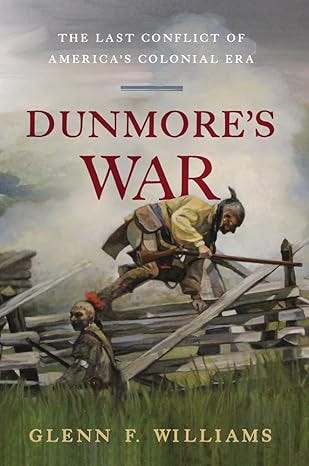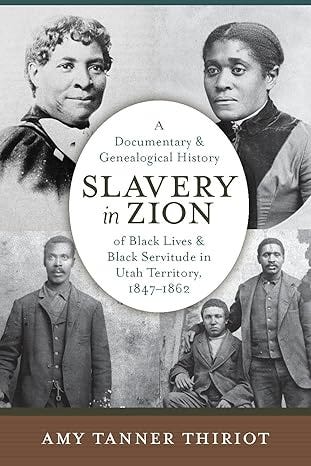


Schooling myself about possible pre-Revolutionary War military service prompted me to order the paperback version of Dunmore’s War: The Last Conflict of America’s Colonial Era by Glenn F. Williams proves enlightening. I didn’t expect to find multiple pages mention specific ancestors Paul Fro(h)man, Abraham Hite and Conrad Weiser. I was thrilled by the 48-page end notes sorted by chapter. 12-page bibliography in addition to the index. Included are incredibly useful maps — a circa 1771 “General Map of the Middle Colonies of America” for a broad concept of location, and a circa 1803 map of Western Pennsylvania, both from the Library of Congress.
Slavery in Zion: A Documentary and Genealogical History of Black Lives and Black Servitude in Utah Territory, 1847-1862 by Amy Tanner Thiriot is an exercise in understanding the true history of chattel slavery versus indentured servitude, but more specifically how things were “handled” in the in the Utah Territory before emancipation. No whitewashing here. “Saying the names” of the enslaved is a major part of preserving the untold history. So too, is the 4 February 1852 Act in Relation to Service: Utah Territory that mandated issues of governing court, treatment, penalties for ill-treatment, transfers, inheritance. and a stipulation that no less than 18-months of education is to be provided for enslaved between 6 and 20 years of age. Given the history of extending Priesthood ordination to church members of African American descent, this book takes a hard look at the actual compliance with the Act. I appreciated the several appendices with sample documents, listing of former and unproved enslavers, and a listing of identified enslaved individuals. The author rounds out the study with a 25-page bibliography and a 39-page of endnotes sorted by chapter. Brava!
Being overly curious, I searched online for Act in Relation to Service: Utah Territory and found the University of Utah’s This Abominable Slavery: An Act in Relation to Service.
To familiarize myself with the experience of my ancestors living in Washington, I have turned to the University of Washington’s PNQ Pacific Northwest Quarterly. The Summer 2024 Volume 14, Number 3 features a leading article by Kimberly Jensen titled “Researching and Writing Oregon’s Others.” Historians will recall that Washington was once part of the Oregon Territory. The book Oregon’s Others is Ms. Jensen’s exploration about gender, civil liberties, and the surveillance state in the early 20th century.
Washington became a state in Nov 1889, but the PNQ article about Oregon mentions federal initiatives that would have also affected my early 20th century ancestors residing in Washington state. Jensen’s references to women’s voting rights and prohibition were likely similar to my ancestors’ challenges. Other references to “non-citizen” or “enemy” alien registrations during WWI, US Indian Service medical services may have affected my ancestor’s neighbors and touches on societal prejudices the entire region experienced.
If you have an account or haven’t used your free 100 monthly views at Hathi Trust, you’ll find the publication here. https://www.jstor.org/journal/pacnorwestq.




Thank you for an assessment of these resources! Its very hard to find such thoughtful reviews of historical non-fiction works and I like how you related them directly to using them for your own historical context in your research. I’m putting them on my TBR list. One question, what is the latest on your book club? Last I heard, you were making some changes?
It's sad to see how much of our history is not taught accurately. Too many important subjects have been glossed over, and the current anti-intellectual leadership in the country is trying to bury them even deeper. Thanks for pointing out these important resources.